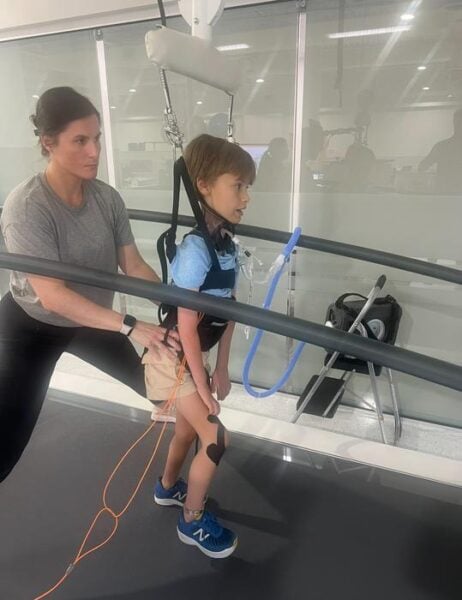Summary: Scientists at Kennedy Krieger Institute have developed a promising new treatment for children with Acute Flaccid Myelitis (AFM), a rare condition causing sudden paralysis. The therapy combines non-invasive spinal stimulation with movement training, showing significant improvements in patients’ ability to walk in a recent study published in the journal Children.
Journal: Children, September 12, 2024 | Reading time: 4 minutes
A New Hope for Rare Condition
For children affected by Acute Flaccid Myelitis (AFM), a devastating condition that can cause sudden paralysis, a new treatment offers fresh hope. Research from Kennedy Krieger Institute’s International Center for Spinal Cord Injury has demonstrated remarkable success in helping these young patients regain their mobility.
The condition affects approximately one in 1 million children in the United States annually. Despite its rarity, its impact is profound – AFM typically follows a viral infection and inflames the spinal cord, leaving children with long-term paralysis in their diaphragm, arms and/or legs.
Innovative Treatment Approach
The new treatment combines two key elements: Transcutaneous Spinal Cord Stimulation (TSS) and movement training. TSS works by applying electrical current through pads placed on the skin to the spine, effectively amplifying signals traveling from the brain through the spinal cord. This amplification helps facilitate muscle activation and restore motor function.
In the study, four children with AFM participated in 22 therapy sessions. During each session, they received TSS while moving on a treadmill, supported by a harness system. The results proved encouraging – three of the children showed improvements in walking distance, while two demonstrated measurable gains in posture, speed, and overall walking function.
A Path Forward
“It’s encouraging to witness the transformations in these children,” notes Rebecca Martin, the study’s primary investigator. “TSS is revolutionizing the field of neurorehabilitation, providing a safe alternative to the aggressive surgeries often required for young patients.”
The rarity of AFM has historically made it challenging for researchers to conduct comprehensive studies with large sample sizes. However, this breakthrough offers new possibilities. “This treatment is giving families a long-awaited solution when they previously had no answers,” Martin explains. “Now our goal is to continue refining this approach and make it more widely available to these rare patients across the country.”
Glossary:
- Acute Flaccid Myelitis (AFM): A rare neurological condition causing sudden paralysis
- Transcutaneous Spinal Cord Stimulation (TSS): Non-invasive therapy using electrical current applied through skin pads
- Neurorehabilitation: Therapy aimed at recovery from nervous system injury
- Motor function: The ability to move and control muscles
Quiz:
- How many children in the United States are affected by AFM annually?
Answer: One in 1 million children - How many therapy sessions did patients receive in the study?
Answer: 22 sessions - How many children in the study showed improvements in walking distance?
Answer: Three children - What typically precedes AFM development in children?
Answer: A viral infection
Enjoy this story? Get our newsletter! https://scienceblog.substack.com/
If our reporting has informed or inspired you, please consider making a donation. Every contribution, no matter the size, empowers us to continue delivering accurate, engaging, and trustworthy science and medical news. Independent journalism requires time, effort, and resources—your support ensures we can keep uncovering the stories that matter most to you.
Join us in making knowledge accessible and impactful. Thank you for standing with us!

